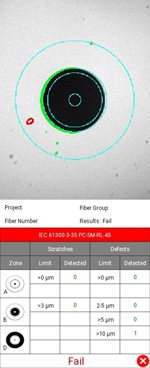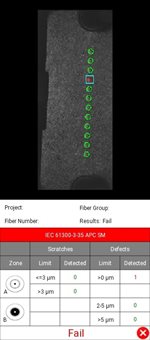BLOG
AFL Blog -New Does Not Equal Clean
05/11/2020
Fiber Optic Connectors need to be pristine when they are connected for several reasons. First, dirty or damaged connectors are the number one cause of network outages. Second, a dirty or damaged connector is plugged into another connector, your problem just doubled. Lastly, if test equipment is scratched, for example an OTDR, which is worth thousands of dollars or network equipment worth tens of thousands of dollars, that equipment will have to be replaced, adding even more dollars.
The solution is simple: inspect each connector, clean if necessary, inspect again to verify it’s clean and connect. This process is often abbreviated down to Inspect, Clean, Inspect, Connect—or ICIC. Seems like a no-brainer, but, it doesn’t always happen this way. Why? Ironically, saving time is usually cited as the reason for skipping these critical steps. People don’t consider all the time it will take to find and fix a dirty connector which contributes to increased costs.
Another reason is the misconception that a new connector is a clean connector. This is not true. These
connectors are made in factories, not cleanrooms, and they are installed in the real world which can be a dusty place. Even the air we breathe is filled with dust particles that are 2 µm to 5 µmm across, so if just one speck of 5 µm dust floating in the air lands on the core, which is only 9 µm, more than 50 percent of the light traveling through that fiber is lost. Even putting on or taking off the protective caps causes an electrostatic charge that attracts dust particles floating in the air. Technicians can accidently touch the end-face or brush the connector housing when plugging it in, all of which can contaminate the connector.
connectors are made in factories, not cleanrooms, and they are installed in the real world which can be a dusty place. Even the air we breathe is filled with dust particles that are 2 µm to 5 µmm across, so if just one speck of 5 µm dust floating in the air lands on the core, which is only 9 µm, more than 50 percent of the light traveling through that fiber is lost. Even putting on or taking off the protective caps causes an electrostatic charge that attracts dust particles floating in the air. Technicians can accidently touch the end-face or brush the connector housing when plugging it in, all of which can contaminate the connector.
Recently, AFL tested new MPO and single fiber connectors ordered off the Internet. They were inspected right out of the packaging and the findings were startling. Almost 40 percent failed. View the images below taken of these connectors with AFL’s FOCIS Lightning® inspection probe.








Above: Examples of failed inspection on new single fiber and MPO (far right) connectors.
The stakes could not be higher. Network outages are costly from several angles including increased truck rolls, the amount of time it takes to find and repair (MTTR), Service Level Agreements (SLA) penalties and decreased customer satisfaction. While most technicians know they must clean and inspect existing connectors, especially with network owners requiring proof that proper procedures were followed, the assumption remains: new = clean. Looking at the real-life examples above proves that equation is not true.
The best way to keep fiber optic networks up and running optimally is to inspect, clean, inspect, and connect every time.